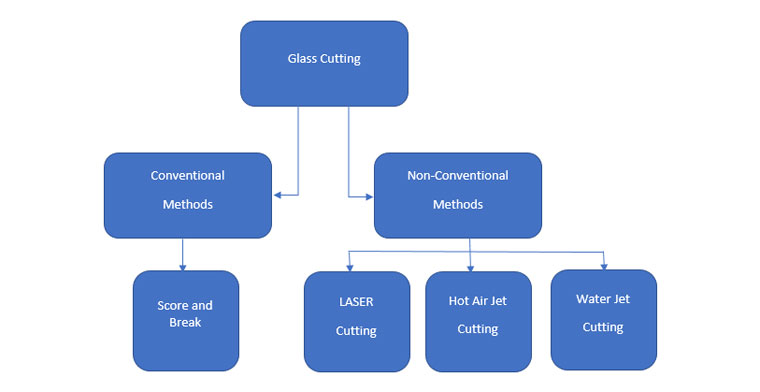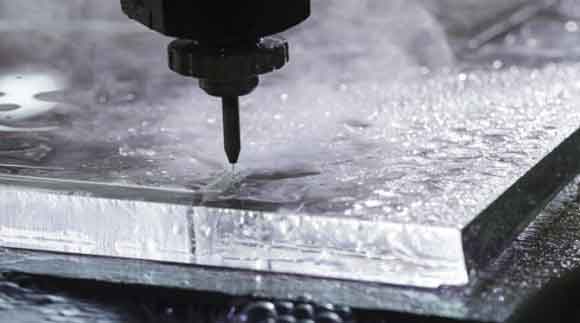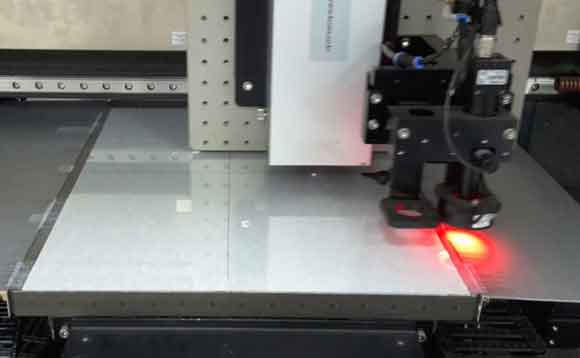Home » Blog » Non-conventional Glass Cutting using Laser, Water-Jet and Hot Air-Jet
Posted on : 25-05-2022 Author : Lavanya Chauhan

Glass can be cut in a variety of ways. With conventional glass cutting, the desired line is first scored and then weakened to break the glass by applying a certain amount of controlled force. The glass will break into two sections on the scored line with wavy and rough-cut edges.
However, the conventional glass cutting method is not suitable for glass with curved profiles, big size and higher thickness. If you want cost-effectiveness and precision for your high-end glass cutting needs, then adopt non-conventional glass cutting methods. With these modern methods, you can avoid microcracks and glass wastage during the cutting process. Non-conventional methods of glass cutting include water-jet cutting, laser cutting and hot air-jet cutting. These can be used to cut glass for any purpose, be it industrial, architectural or home use.

In the last decade, water-jet cutting of glass has become more prevalent and an industry standard. It is a cost-effective, environmentally safe and an efficient way to cut glass, be it intricate patterns in stained glass or holes in laminated glass.
In this unique method, a high-pressure water jet is used with an abrasive substance to cut glass. A stream of de-ionized water is passed through a small diamond nozzle at high speed, almost three times the speed of sound. The abrasive substance usually used in this method is garnet sand. Based on the requirements, the pump pressure, nozzle size and distance, feed speed and number of abrasives added can be adjusted.
Water-jet cutting is extremely efficient as complex designs can be cut without generating heat. Even products with multiple edges can be altered mid-part and cut to precision. The mechanical properties and the integrity of the material being cut remain unchanged in this method as there is no heat generation. Due to the precision and efficacy of this method, water-jet cutting is now used in many industries. However, this method sometimes results in rough surfaces and leads to wear and tear of the nozzle.

Perhaps one of the hottest topics in the glass industry, laser cutting is modern and offers high quality finish, negligent material stress and high operational speed.
In this thermal process, an intensely-focused and high-powered laser beam is used to melt, burn or cut the glass. The laser beam can be a continuous wave where laser energy is continuously delivered during the cutting process, heating the glass to the point of vaporization. Alternatively, laser energy can also be given in short pulses causing energy compression. You can achieve high density and temperature, leading to better cuts with less deformations.
Laser cutting has gained massive popularity due to its superior quality of surface finish, high density compression, less deformations, smooth edges and low maintenance. With new technological evolution, computer-directed and automated systems offer faster solutions and have made laser cutting cost-effective. Though this method is clean, quick and accurate, laser cutting is still costly and leaves a heat-affected zone on the material.
Another non-conventional way of cutting complex glass profiles is by using a jet of hot air. This method is usually used to cut glass with thickness between 2-20 mm.
In this method, a shallow cut or a scratch, referred to as the jet axis, is first made for the hot air-jet to cause thermal stress. The glass then cracks or fractures along this axis due to the thermal stress caused by the air-jet. Here, high pressured hot air is forced through a micro nozzle. It interacts with the hard and brittle glass with high density and velocity to make a neat cut.
Hot air-jet cutting is a low-cost and simple method to cut glass with ease and less effort. It is a relatively neat method as very negligible amount of chipping and cracking are found in this method.
To conclude, non-conventional glass cutting methods offer more precision, efficacy, smoothness and are now globally used.